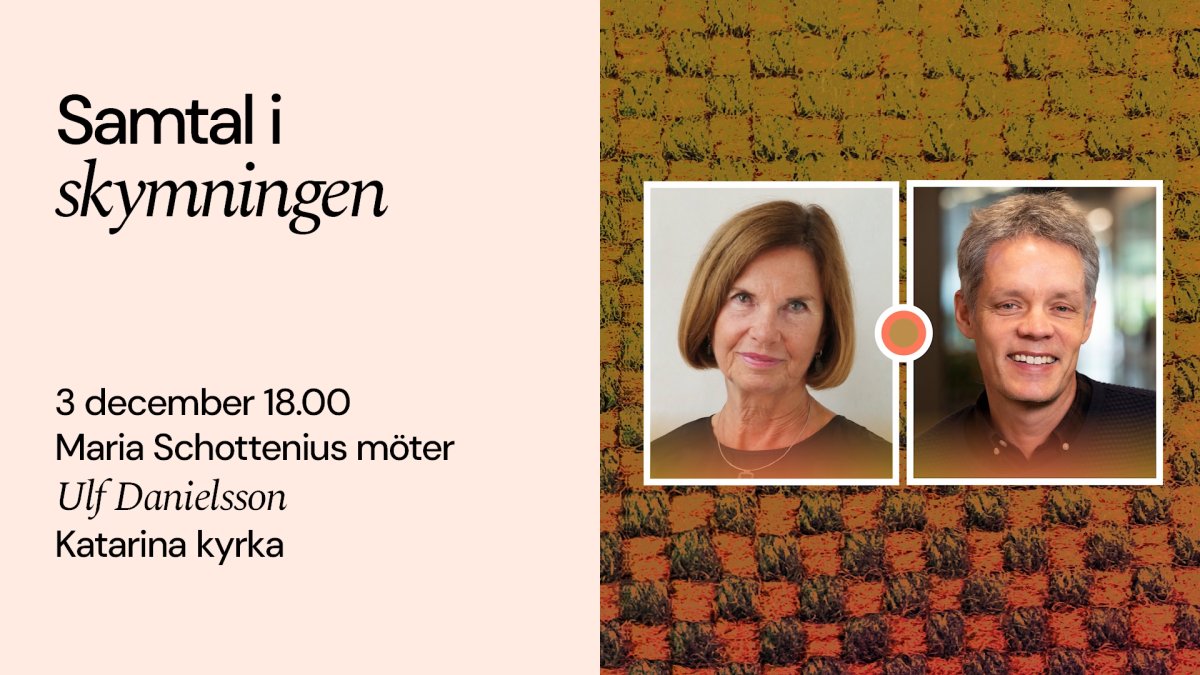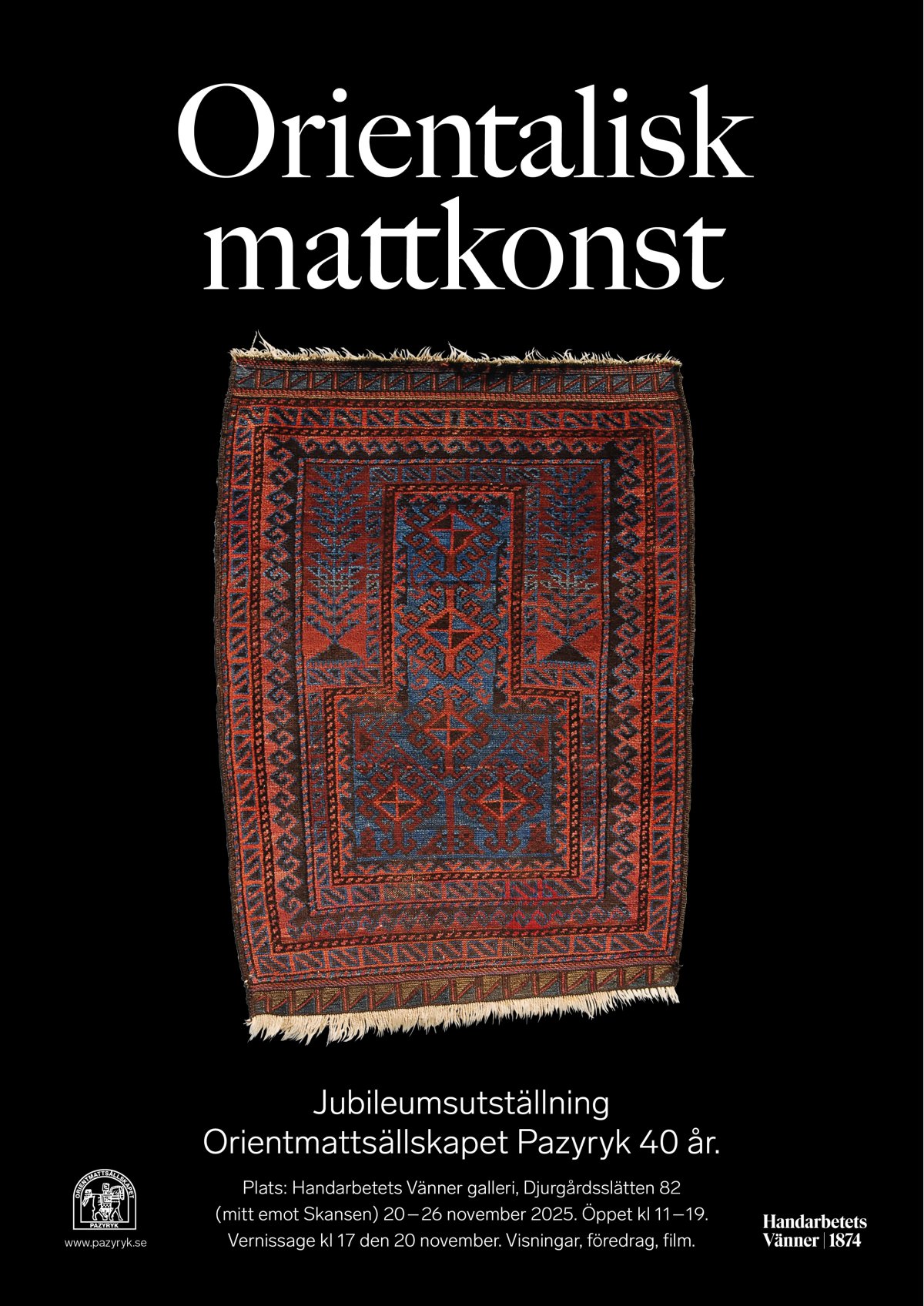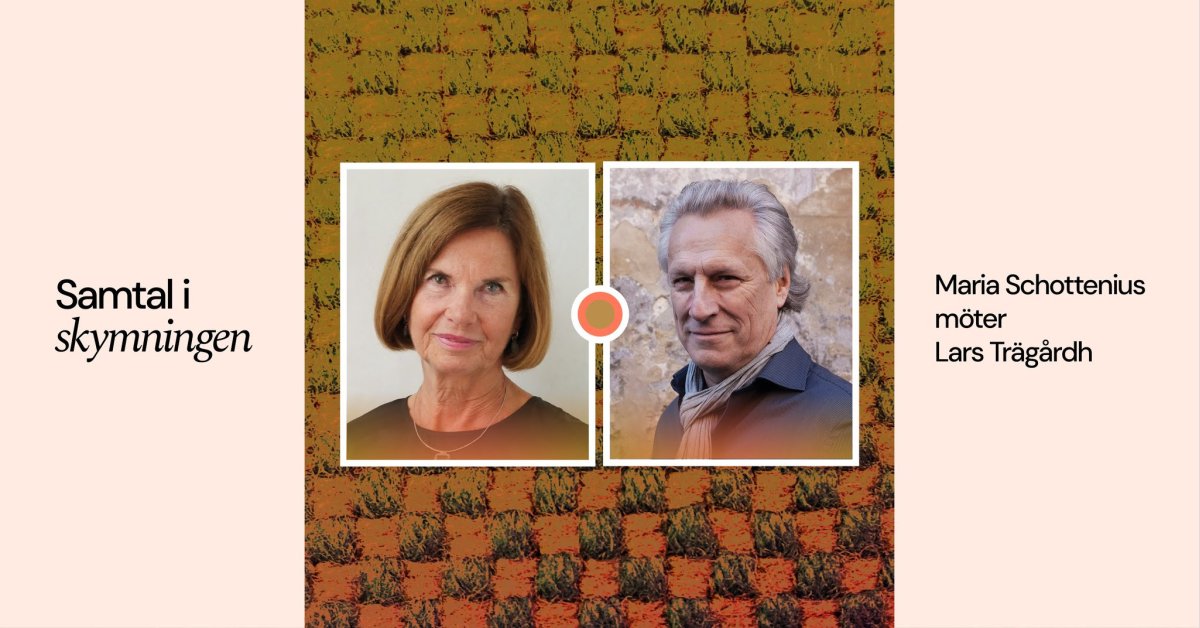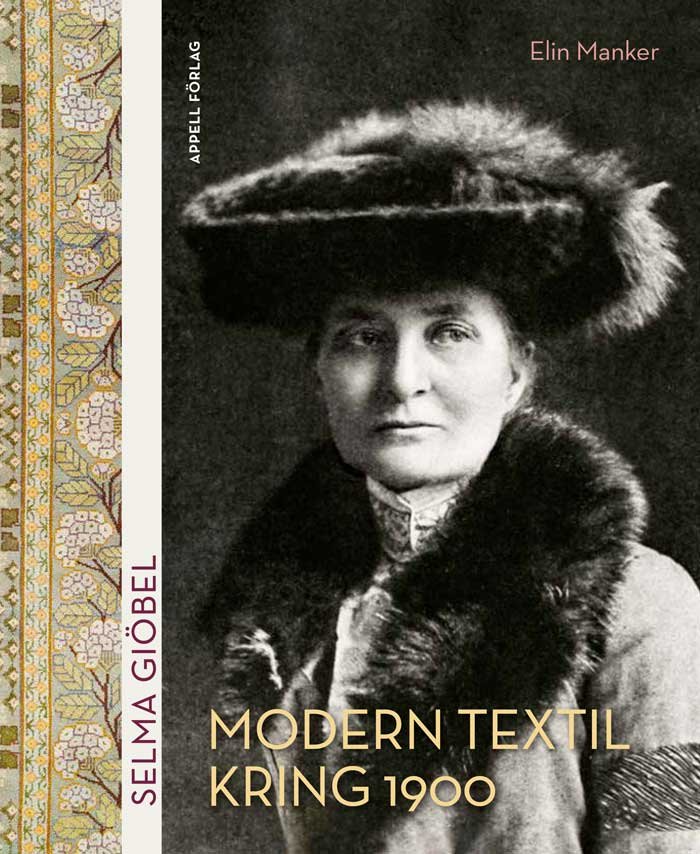Samtal i skymningen

Medlemmars föredrag, utställningar, konserter, nyutgivna böcker m m.


Kära systrar i Nya Idun!
Sista åren har jag varit lite mindre flitig på samkvämen beroende på att jag jobbat med en bok som nu kommit ut i bokhandeln.
Det har varit en lång och spännande resa i arkiv och litteratur som fört mig djupt in i Upplysningstidens samhällsklimat och Frihetstidens volatila politiska tid då Hattar och Mössor växlade av varandra vid makten och kungens makt var kraftigt beskuren.
I korta drag kan boken presenteras så här:
Axel Magnus von Arbin personifierar frihetstidens samhälle, präglat av upplysningens och merkantilismens idéer. I kraft av egna meriter nådde han högt på samhällsstegen, men såg sig tvingad att begära avsked när han inte hade råd att leva på den nivå som hans ämbetet krävde.
Ordförandeskapet i Kungl. Patriotiska Sällskapet och presesrollen i Kungl. Vetenskapsakademien speglar hans engagemang i tidens frågor och vetenskapernas utveckling. Han ledde arbetet med fästningsön Gråen i Landskrona och var arkitekten bakom kronverket Ehrensvärd på Sveaborg och fästningen Tavastehus.
Under Pommerska kriget åren 1757–1762 initierade han en epokgörande modell för militär kartering, förebild för fortsatt utveckling inom svensk militär kartografi. Boken är rikt illustrerad med ritningar och kartor från tiden, de flesta med Axel Magnus von Arbins signatur. Och Appell Förlag har lagt ner en fantastisk omsorg i formgivning och foto som gör boken dubbelt njutbar.
Dyk ner i tiden och lär känna mannen!
Hälsningar Christina

Stockholms välkända Orientmattsällskap Pazyryk fyller 40 år och firar detta med en stor utställning med samlarnas bästa och mest unika mattor, allt från riktiga rariteter, tätknutna stadsmattor, robusta nomadmattor och många slags brukstextilier.
Utställningen visas på Handarbetets Vänner Galleri, Djurgårdsslätten 82, Stockholm. Den 20 november är det vernissage klockan 17.00, men kom tidigare för att se både mattorna och de filmer om mattknytning som vi visar under eftermiddagen.
Utställningen pågår 20-26 november med öppettider 11.00-19.00 dagligen, så skynda!
Vi har, förutom alla vackra mattor, också guidade visningar, filmer och klockan 15.00 fredag, lördag, söndag föreläser kända mattexperter om mattor och deras historia, inte minst Pazyryks egen – världens äldsta kända, knutna matta!
Som avslutning, sista dagen, är ni besökare välkomna med era textila favoriter (inte alltför stora!) som ni kanske vill veta lite mer om. Vi svarar efter bästa förmåga!
Välkomna till varma färger i höstmörkret!
Orientmattsällskapet PAZYRYK Vill ni veta mer gå till hemsidan: www.pazyryk.se.
Med hälsningar!
Uuve Snidare.

Kära Vänner,
Varmt välkomna till boksläppet av min andra egna diktsamling, ”Jul-och nyårshälsninghälsningar under 30 år”,
När: torsdagen den 13 nov kl.18.00
Var: Sankt Matteus Församlingsbibliotek, Västmannagatan 92 två trappor i Stockholm.
För att veta hur många stolar som ska ställas fram, vore det fint om du senast måndagen den 10 nov mejlar anmälan till vivianne.hoogendoorn@svenskakyrkan.se
Vivianne Hoogendoorn kommer att fungera som moderator under kvällen.
"Jul- och nyårshälsningar under 30 år" är en hjärtlig och reflekterande diktsamling av Margaretha Herthelius, där hon samlat trettio års jul- och nyårs verser ursprungligen skrivna som personliga hälsningar till släkt och vänner. Med utgångspunkt i både tidlösa julmotiv och aktuella världshändelser, väver Herthelius samman ett varmt porträtt av julens glädjeämnen och utmaningar. Dikterna erbjuder ögonblick av stilla eftertanke och påminner oss om vikten av gemenskap, fred och ansvarstagande för vår värld. Genom åren illustreras både stunder av personlig reflektion och universella strävanden mot fred och rättvisa, vilket gör denna diktsamling till en lyrisk gåva för alla som önskar en djupgående läsupplevelse under högtiderna.
Margaretha Herthelius har varit lärare och grundskolerektor och har tidigare varit kyrkopolitiskt aktiv. Hon har även varit landstingspolitiker och nämndeman, samt under åtta år förbundsordförande i Schizofreniförbundet. Margaretha är sedan många år bosatt i Stockholm och har tidigare skrivit diktsamlingen Relationer i sand. Jul- och nyårshälsningar under 30 år är hennes andra bok.
Allt gott,
Margaretha

Kära iduneser,
Ni är alla välkomna till Katarina kyrka där jag i höst har samtal som rör tro och vetenskap. Den 5 november kommer Lars Trägårdh (killen med halsduk, träskor och kulturkanon).
Senare i höst, den 3 december kommer Ulf Danielsson (fysikern som på dalmål brukar förklara Nobelpriset fyrsik).
Våra samtal pågår ungefär en timma mellan 18 och 19 - fri entré.
Det finns te och mackor att köpa från 17.30. Och vi inleder med musik.
Jätteroligt om ni har lust att komma!
Maria

En ny bok om Selma Giöbel är publicerad på Appell förlag, författad av Elin Manker. Selma som levde mellan 1843 och1925 tillhör pionjärerna både som textilkonstnärinna och som medlem i Nya Idun, invald 1885. Selma var aktiv i Handarbetets Vänner och grundare av affärsrörelsen Svensk Konstslöjdutställning i Stockholm 1885. Hennes vackra matta Ombergs blommor finns fortfarande att se på Ellen Keys Strand. Selma är begravd vid Nässja kyrka utanför Vadstena och har en skyttel som symbol på sin gravsten.
Läs gärna mer om Selma Giöbels konstslöjdutställning här:
Delta i en självgående studiecirkel genom Folkuniversitetet där ni tillsammans utforskar hennes tankar och idéer, helt utan krav på förkunskaper.
Mer information finns att läsa här: https://share.mediaflow.com/sv/?GDCC2Q4XCK
Kontakta gärna Ida Olai för ytterligare information på mailadress: ida.olai(a)folkuniversitetet.se


Virginia Woolf skrev om de osynligas närvaron som bidrar till att göra oss till vad vi är; människor som inte längre finns med oss men vars bidrag till vår förståelse av världen och vår plats i den är oöverskådlig. Det finns dock andra mer påtagliga faktorer som formar oss, människor vi har mött, platser där vi har varit, händelser som utgör hur vi ser oss själva. Dessa är förmodligen mest inflytelserika under våra formande år, barndom och unga vuxenliv.
Denna bok har skrivits både för författarens svenska barn och barnbarn vars tidiga liv och uppväxt har varit så olika hennes, och för släktingar i Storbritannien som är nyfikna på släktforskning. Denna upptäcktsresa använder minne såväl som dokumentation för att återskapa upplevelsen av att växa upp i en specifik familj i tidens sociala och kulturella sammanhang. Innan författaren började ett nytt liv i ett nytt sammanhang: före Sverige.
Catherine Dahlström är inte släkt med Virginia Woolf, men en hel del av hennes forskning har rört henne. Det finns dock en lite koppling via ett brev från Catherines pappa till hennes mamma innan de gifter sig, där han frågar henne om Virginia Woolfs röst. Han var lektor vid Trinity College Cambridge och institutionen funderade över om de skulle bjuda in Woolf till att föreläsa.
Omslagsbilden är den s. k. Wren Library förlaga för biblioteket i ”Ett Eget Rum”.
Varför skrev du denna bok?
Catherine svara att när en kusin på hennes mammas sida dog för sådär 7-8 år sedan tyckte hennes son att Catherine - som den enda som kunde familjens historia - skulle skriva ner den. Dessutom hade ett av hennes svenska barnbarn också uppmuntrat henne, p.g.a. hennes förmåga att berätta historia. Catherine har en hel del källmaterial och gjorde ännu mer arkivforskning innan pandemin, vilket också var väldigt upplysande om hennes mor- och farföräldrar. Hon har genomgående försökt att sätta sina minnen och upptäckter i deras historiska sammanhang.
Catherine tror att Virginias mor, Mary Sandbachs tid i Sverige på 20-talet och hennes tid som översättare, kan vara av intresse för många. Det finns en gammal SVT dokumentär om henne som också kan vara värt att se!
Boken hittar du här: https://bokmaskinen.se/boktorget/biblioteket
Eller genom att maila författaren: catherined.cdm@gmail.com
Publicerad: 2025
Pris: 200 kr
Genre: Biografier & Memoarer
Språk: engelska
Ett utdrag ur introduktionen i boken:
Introduction
In a Sketch of the Past Virginia Woolf writes of the Invisible Presences that form so much of our conscious lives. They are the forces of society as well as the individuals, both alive and dead, whose lives have been instrumental in forming ours – our values, our expectations, our understanding of ourselves. I believe with Virginia Woolf that they haunt us and inform us, though we may not recognise their presence. This book is an attempt to demonstrate how this might work by interweaving my own private memories of my childhood and adolescence with an account of my grandparents, parents, aunts and uncles while anchoring them in the context of their times.
Many people take to writing their memoirs in old age – with no doubt very varied results. But families also possess narratives and myths that are recounted over time, anecdotes with more or less of a basis in truth. I have been asked, and have also tried, to record these and, in the process hope to have given them some substance. It has been a voyage of discovery as well as of recollection. And of confrontation with the person, I believe myself to be.
Memory, the experts tell us, is fickle or to be more accurate it is created and recreated over time rather than being stored unchanged somewhere in our brains. Putting this together, I have started with my memories, or with family anecdotes, and then gone back to check sources – amongst them my own letters. This exercise has taught me that some memories coincide with the documentation while others are distorted. It has also taught me how much we forget; my letters are full of people I can no longer visualise; plays I do not remember seeing and books I do not know I read. But another lesson is, maybe, that the people and memories that remain, that emerge from the cacophony, are those that were significant - even if I did not know that at the time.
Writing this has also been a journey into social history. Much research into family background is a question of identifying individuals. I have always known the names of my forebears; what I have sought is an understanding of them as people in the context of their time. As they occupied “positions in society” they have left traces in public records, in the pages of the Dictionary of National Biography, in obituaries - information that has been invaluable. Coming from the Industrial Midlands, businesspeople and educationalists, non-Conformist in belief and politically aware they represent an influential stratum of British society in the latter years of the 19th century and well into the 20th century.
Inevitably, these people, as well as their circumstances, have formed me and since this book is an attempt to explain how I came to be me, they remain the invisible yet inescapable presences. Even if they were as interesting, or uninteresting, as any group of human beings, certain aspects of their being do tend to reoccur however: the centrality of the intellectual life, the importance of education, engagement in the life of either society as a whole or some other form of community. And that seems to say it all.
*

I juni 2024 publicerades Ann Erikssons bok ”Trädgård med skulptur” på Sigma förlag.
Boken är en dokumentation av en unik trädgård på Södermalm präglad av skulpturer av Christian och Liss Eriksson och ateljébyggnader.
Boken är rikt illustrerad med fotografier av växter och skulpturer samt målningar inspirerade av platsen. Text och fotografi av Ann Eriksson, efterord av Tonie Lewenhaupt.
https://lisseriksson.se/index.php?page_id=10&resa=60
Trädgården är privat så den är inte öppen för allmänheten. Däremot ordnar Ann och hennes syster visningar för grupper om 15 personer. Om man är intresserad av en visning kan man kontakta Ann, så ger hon mer information.
Ann Eriksson
Tel. 0703985434

Fyra kvinnor är fler än tre män - en vårkväll på Restaurang Gröna dalen i Gröndal, torsdagen den 24 april kl. 19.00.
Fyra kvinnor varav två iduneser; Kristina Håkansson och Eva Nikell tillsammans med Inger Hansson och Stina Stensland sjunger till jazztrio: Arne Tengstrand piano, Jakob Ulmestrand bas och André Borgström på trummor.
Boka bord: 08-709 09 09, 070-230 46 15, info@gronadalen.se
Specialerbjudande: en rätt + glas öl eller vin 229 kronor.
Ej biljettköp, men gärna ett bidrag i hatten till musikerna.
Adress: Gröndalsvägen 40, Hållplats Gröndal. Ta Tvärbanan eller buss 133 som går från Liljeholmen.
Varmt välkomna!

Boka på https://kulturhusetstadsteatern.se/teater/vasadottern-0
***
När Gustav Vasas 19-åriga dotter avslöjas med en älskare hoppas hela Europa att skandalen ska kuva prinsessan. Brännmärkt, stenrik och frihetstörstande har Cecilia Vasa bara börjat. Kanske kan en vänskap med Englands drottning ge henne självständighet – eller varför inte ett liv som pirat?
Baserad på den sanna historien om Sveriges skandalprinsessa Cecilia Vasa.
Av och med: Cecilia Säverman
Regi: Judith Hollander
För 500 år sedan orsakade hon Vadstenabullret: den största skandalen i svensk kungahistoria. Efter att ha blivit hela Europas fallna kvinna blir hon bästa vän med Englands drottning Elizabeth I av England, lever som pirat på Östersjön och föder sju barn. Kvar efter diplomaten, bråkstaken och prinsessan finns bara ryktet om skökan. Det är dags för Sveriges piratprinsessa Cecilia Vasa att inta scenen.
En enkvinnasföreställning med lika många roller som Cecilia Vasa själv kanske hade. Genom dramatik, kärlek och humor belyser prinsessagan kvinnans kamp för självständighet i en tid då hennes röst, ekonomi och makt var förbjuden.
I dagens politiska läge är Vasadottern mer aktuell än någonsin.
Välkommen på en hisnande resa in i 1500-talets svenska och europeiska maktspel!
Senast spelad på Göteborgs stadsteaters lunchteater för fulla hus. 2022 spelad på bl a Vadstena slott, Livrustkammaren och Kulturhuset Stadsteatern Soppteater.

Kulturjournalisten och katarinabon Maria Schottenius i samtal med gäster. Vad är det värdefulla i livet, hur når vi det, var finns platsen för religion och andlighet, vad betyder tro (och tvivel), finns det svar i kulturella upplevelser?
Anders Arborelius, är kardinal och biskop i Stockholms katolska stift, den första svenske kardinalen någonsin. Han är karmeliter-broder sedan han var drygt 20 år och har alltså levt hela sitt vuxna liv som aktiv katolik i Sverige. Han växte upp i Lund, pappan var arkitekt, mamman bibliotekarie och han konverterade till katolicismen som 20-åring, 1969.
I samtalet i Katarina kyrka vill Maria Schottenius tala om hans livsval, varför han valde den katolska kyrkan och hur han ser på sitt uppdrag som kardinal.
Kaffe och smörgås finns att köpa i kyrkan före samtalet. Fri entré

Märta Holkers har utkommit med en ny rikt illustrerad konstbok om hur fabeldjuret grip har gestaltats i bildkonsten under 4000 år.
För första gången på svenska presenteras historien om detta märkliga väsen i text och bild.
Boken ges ut av Bokförlaget Arena i Malmö.

Varmt välkommen till boksläppet av Margaretha Herthelius första egna diktsamling: "Relationer i sand" den 11:e mars kl. 18:00.
Föranmälan: För att veta hur många stolar vi ska ställa fram är vi tacksamma om du senast torsdagen den 8 mars mejlar svar till vivianne.hoogendoorn@svenskakyrkan.se
Vivianne Hoogendoorn kommer att fungera som moderator under kvällen och även berätta något om Sankt Matteus unika bibliotek.
Något om min bok.
Detta är min första egna diktsamling, som jag nu äntligen vågat låta gå till tryck. I diktens form har jag skildrat delar av mitt vuxna liv från de fyllda fyrtio till de dryga åttio. Jag hoppas att du någon gång kanske också känner igen dig i mina dikter. Många av dikterna handlar om möten med människor och då särskilt möten med barn, alldeles speciella barn. Några dikter handlar om kamp, några om krångel och byråkrati, några om vrede, ensamhet, besvikelse, sorg och saknad. Men dikterna rymmer också kärlek, lycka, hopp och passion. och till sist, det vi alla måste möta, mötet med döden. Jag har kallat min diktsamling ”Relationer i sand”, för vi vet alla, att havet, vinden och tiden suddar ut våra fotavtryck i sanden, men kanske finns de ändå på något sätt kvar där för evigt.
Stockholm i februari 2025
Margaretha Herthelius

Anna Lindhagen arbetade bland annat för rösträtten, barn och mödrars rättigheter, freden och ett skönare och bättre Stockholm. Som nära vän till Ellen Key valdes hon in i Nya Idun 1903.
Författare är Suzanne Lindhagen, byggnadsantikvarie och idunes.
VÄLKOMNA till ANNA LINDHAGENS MUSEUM, Fjällgatan 34, 2 tr som har extra öppet just den 8 mars kl 14-16 då boken finns för försäljning och signering av författaren.
Se mer om museet - www.annalindhagensmuseum.se

20 februari – 29 mars, 2025
Adress: Lützengatan 1, Stockholm
Öppning: torsdag 20 februari, 17.00 – 20.00
Utställningsperiod: 21 februari – 20 mars, 2025
Öppettider: tisdag – fredag 11.00 – 18.00, lördag 12.00 – 16.00
https://nordenhake.com/exhibitions/2025/eva-loefdahl
https://konstakademien.se/sergelpriset/
Eva Löfdahls konstnärskap sträcker sig över 40 år och inbegriper en oeuvre av skulpturer, målningar och performance som motstår enkel, språklig kategorisering. Hennes verk kan först uppfattas som outgrundliga men är ofta materialiseringar av faktiska fenomen – modeller av komplexa påståenden och illustrationer av annars osynlig dynamik.
Löfdahl väcker det heliga genom det profana. Materialen är ofta opretentiösa och nära till hands – ofta anpassade vardagsobjekt – såsom valstråd, magneter eller snören omslutna av till exempel gips eller styrenplast. Skapandeprocessen är både ett sätt att förstå och ett försök att göra det abstrakta och diffusa till något konkret och greppbart.
Några av de senaste verken i An Audile Double presenterades i relation till äldre verk i Löfdahls utställning The Flow of Everything på Marabouparken (2024). Serien Alla världar ger ett sken består av fyra halvsfärer. Ytan på de verk med undertiteln C & D består av sammanfogade spegelskärvor och linfiber, vilket skapar en skarpkantig mosaik. A & B är täckta med ett collage av kartfragment som frammanar en slags metageografi, som ett pussel utan överblick skapar vägar, vatten och färger ett nytt landskap. Dessa egendomliga topografier för tankarna till delvis bekanta planeter, den ena kan för en nykomling uppfattas som jordliknande, den andra påminner i stället om ett kristallint månlandskap.
Utställningen inbegriper också ett nytt storskaligt verk med titeln Korn av sanning. Placerat horisontellt i omväxlande rader tvärs över galleriets rum som noter i ett partitur bildas ett slags porträttgalleri i en serie om 33 fotografier av maneter. Löfdahl fotograferade maneterna som låg strandade i solen, under tre somrar (2022 – 2024). Det latinska namnet för denna vanligt förekommande manet är Aurelia aurita. Aurelia betyder guld eller gyllene och aurita syftar till öron och lyssnande.
Det här är Löfdahls åttonde soloutställning på Galerie Nordenhake sedan 1993. Hon är i år mottagare av Sergelpriset 2025, som är ett utav det främsta skulptörpris en skulptör kan få.
2013 tog hon emot Sveriges Bildkonstnärsfonds Stora stipendium och 1997 Moderna Museets Skulpturpris.
Eva Löfdahl föddes 1953 i Göteborg och bor och arbetar idag i Stockholm. Marabouparken presenterade en översiktsutställning med titeln The Flow of Everything, 2024. Hennes konstnärskap presenterade i en storskalig retrospektiv på Moderna Museet i Stockholm 2011. Löfdahls verk var också en del av utställningen Sleepless Nights på Moderna Museet i Stockholm 2023. Hon har tidigare haft soloutställningar på Veda, Florence, (2022 och 2018), Lunds Konsthall, (2009), Krognoshuset, Lund (2004), Moderna Museet, Stockholm (2002) och Kunstraum Düsseldorf (1998). Hon har medverkat i grupputställningar på Artipelag, Gustavsberg (2022), Göteborgs konstmuseum (2019, 2008), Bonniers Konsthall, Stockholm (2017, 2006), Malmö konstmuseum, Malmö (2017), Clifford Gallery, Colgate University, New York (2016), Kalmar konstmuseum, (2015), Art in General, New York (2013), Modernautställningen, Moderna Museet, Stockholm (2010), Liljevalchs konsthall, Stockholm (2005) och ARS 95, Kiasma Finlands Nationalgalleri, Helsingfors (1995). Löfdahl representerade Sverige på Venedigbiennalen 1995. Offentliga verk inbegriper Kalender Stadsparken, Lund (2013), The Entrepreneur Monument, Helsingfors (2006) och Kalmar

En eftermiddag med boksläpp, ett glas bubbel med tilltugg och kanske en sång den 10:e februari från klockan 14:00 till 17:00.
Boken kommer att finnas till försäljning.
Vill du uppvakta Solveig på 80-årsdagen – köp gärna boken på Dagen!

Torsdagen den 6 februari inleds vårens Singers Night i Gröndal.
Singers Night är en öppen scen på sångare inom jazz, blues och visa som arrangeras en gång per månad 2025. Eva Nikell och Kristina Håkansson är ansvariga.
Alla är mycket välkomna!
Läs mer på www.singersnight.se.

Walle lyckas till slut hitta sin plats i tillvaron bortom all konvenans. Att som 30-åring förälska sig i en betydligt äldre, sårbar, vitter man som lockar honom in i den enkla skogsstigens magiska vimmel av liv, blir till ett livsavgörande. Runt stigen får han upptäcka de omtänksamma myrorna, de kärlekskranka orrarna och de spännande lavasorterna bland mycket annat.
Men kärlek kan också göra ont. Mitt i all vänskap och trots naturens vidunderlighet blir Walles sinnesro rubbad.
Om boken
Drygt 100 personer kom till Börssalen den 6 november i år för att lyssna till Elin Wägner-monologen "Ensam dam bland 17 herrar". Nu är det snart dags igen!
S:t Pauls Bok & Papper vid Mariatorget, den 12 december kl 18.30. Begränsat med plats. Alla är varmt välkomna. Fri entré.
Temat för programmet är SKAM. Denna gång deltar Julie Lindahl som 2019 kom ut med boken "Pendeln" (Nordstedts förlag). Boken handlar om upptäckten att hennes morföräldrar var med i SS i det ockuperade Polen under andra världskriget och att de senare flydde till Sydamerika för att komma undan rättvisan.
SVT´s recension av boken
Tid: 6 november 2024 kl. 17.00
Fri entré och inga sittplatsreservationer. ALLA ÄR VÄLKOMNA!
Medverkande:
Marianne Enge Swartz
Journalist, författare och Elin Wägner-sällskapets ordförande 1990-2010. Gestaltar Elin Wägner i monologen "Ensam dam bland 17 herrar".
Anna-Karin Palm
Författare, kulturskribent och Akademieledamot sedan 2023. Föreläser om det tre första kvinnorna i Svenska Akademien.
Jonas Gren
Journalist, författare, poet och estradör. Ställer i ett poetiskt föredrag med avstamp i Elin Wägners Väckarklocka frågan: "Vad betyder det att läsa Wägner i en era av global upphettning, hastig digitalisering och demokratisk reträtt?"
VÄLKOMNA också till en stadsvandring samma dag i Elin Wägners - och andra författares fotspår - med Anders Grevesmühl, entusiastisk medlem i Elin Wägner-sällskapet. Start vid Elin Wägner-statyn på S:t Eriksplan den 6 november kl 13.00.
Med exempel från utställningen kretsar samtalet kring Torsten Renqvists verk i det offentliga rummet. Ett samtal mellan Cilla Jahn, författare och konstregissör för offentliga miljöer, och Anna-Lena Renqvist, filosof och dotter till Torsten Renqvist.
Elisabet Reslegård har fått Ingvar Lundbergpriset 2024, från Natur & Kultur, för ”hennes stora engagemang för barns läsning och rätten till ett språk. I ett kvarts sekel har hon outtröttligt drivit opinion för läsandet. Genom stor kreativitet och ihärdigt arbete har hon tänt läsgnistan hos många barn och satt fokus på betydelsen av läsning för det demokratiska samhället."

Varmt välkomna till nypremiären av långfilmsdokumentären Armbryterskan från Ensamheten som nu har nydigitaliserats av Svenska Filminstitutet, 20 år efter premiären 2004! Filmen belönades då med Guldbagge för bästa dokumentärfilm.
Elvafaldiga världsmästarinnan i armbrytning Heidi Andersson är såklart på plats på Filmhuset på Gärdet kl 18.30. Hon bryter arm med de som vill och vågar prova!
Filmvisningen startar kl.19 och efteråt blir det samtal med Heidi Andersson, filmens regissörer Lisa Munthe och Helen Ahlsson. Moderator: Emma Gray Munthe.
Arrangör: Folkets Bio som även anordnar visningar i Storuman fredagen den 11 oktober och i Umeå söndagen den 13 oktober.
Eva Nikell och Kristina Håkansson, arrangörer av Öppen Scen-verksamheten "Singers Night i Gröndal" startar höstens arrangemang torsdag den 19 september kl 18.30 på restaurang Gröna Dalen i Gröndal. Singers Night arrangeras varannan torsdag (jämna veckor) hela hösten. Alla är välkomna fri entré. Läs mer på www.singersnight.se
Hovsångerskan Ingrid Tobiasson sjunger sånger av Allan Pettersson, arior ur Orfeus och Eurydike av Christoph Willibald Gluck m fl.
Elisabeth Gustafsson flöjt
Carina Olofson orgel och piano
Ylva Eggehorn och Anna Strååt ger en lunchkonsert i Danderyds kyrka: Musik och lyrik där Ylva läser sina dikter varvat med att Anna spelar pianostycken. Tisdag 21/5 kl 12. Efteråt serveras sopplunch i Församlingens hus.

EwaMaria Roos har mycket välförtjänt tilldelats 2024 års Göthestipendium av Almebrattska stiftelsen. Tidigare i år publicerade EwaMaria tillsammans med Ewa Thorslund boken Rösten: så talar den till oss. Dramatens röstpedagog delar här med sig av allt som finns att veta om rösten plus goda råd om hur man använder rösten. Boken beskrevs i SVT som ”röstbibeln”.
Birgitta Wistrand politiker och ledamot av Sveriges riksdag, tilldelades i slutet av april diplom och ett arbetsstipendium på 50 000 kr från Stockholms arbetarinstitut för sin bok om Sophie Adlersparre.
Birgitta Liebenholtz har på Lava Förlag i december 2023 utgivit ” Skogsrapporter”, ett skönlitterärt verk om människans förhållande till natur, sorg och sökande efter mening.
Elisabeth Grate bokförläggare, som prickat in två nobelpristagare – Modiano och Le Clézio – under 2000-talet (!), fick Naglerpriset för enastående engagemang i att introducera internationella författare för svenska läsare. Hon är en ”… ovanlig förläggardrottning!”
Petra Lindvall vann, tillsammans med två andra, Haninge arkitekturpris 2023. Jordbroborna önskade en större mötesplats och fick en grön, lummig, surrande köksträdgård, ett rum där samvaro, ätliga växter, bär och frukt är det centrala.
Inger Wästberg har givit ut boken Art Jewellery – A Personal Perspective om den samtida svenska smyckekonsten och dess kontext (tillsammans med ett rikt bildmaterial) efter en föreläsning hon höll på Rian designmuseum. Inger har aktivt samlat, burit och ställt ut smyckekonst under 2000-talet. Bibliotekstjänst ger helhetsbetyg 4 av 5.
Tin Andersén Axell har utställning på Galleri Grip med sina kostymskisser från Gösta Berlings saga. 2-7/12 Celsiusgatan 2.
Anna Strååt piano, ger en solokonsert på Thielska galleriet 5/12 kl 18.
Ann-Christin Biel, sång och Elise Einarsdotter, piano medverkar bland fler vid en konsert i Grünewaldsalen 3/12 som tillägnas Tranströmer och tonsättningarna av hans dikter ur samlingen ”Här är jag lycklig”.
Elizabeth Bonde Hatz är återigen representerad på Arkitekturbiennalen i Venedig. Denna gång i gruppen som valts ut att representera Irland med In Search for Hy-Brasil: Irish Pavilion at Venice Architecture Biennale 2023, som handlar om några av Irlands öar och deras “resilience” och unika kulturer. Allt material i utställningen kommer tillbaka till Irland och de andra öarna efter utställningen slut.
Ulla Forsell, glaskonstnär, får Prins Eugen-medaljen för sin framstående konstnärliga gärning.
Marie Hafström är medredaktör och medförfattare till I det ljusa Småland – en berättelse om Smålands trädgård bland flera författare, forskare och experter med specialkunskaper i bl a. geologi, byggnadsstilar, arkeologi och kulturgeografi. Boken, som lanseras på olika museer och på Bokmässan, gavs högsta betyg av Bibliotekstjänst i Lund.
Ann-Christin Biel, verksamhetschef för Svensk Musik, är initiativtagare till och redaktör för nyutgivna notutgåvan ”Här är jag lycklig” med 28 tonsatta dikter av T. Tranströmer. Kompositörer är bl a. Sven-David Sandström, Victoria Borisova-Ollas, Margareta Hallin, Anders Eliasson och Britta Byström.
Hedvig Hedqvist journalist och författare, har kommit ut med boken Estrid Ericson – en biografi. Bokrelease på Svenskt Tenn 4/10.
Annika Levin är co-curator och producent av årets version av Nobelljuset 2-10/12 på uppdrag av Nobelprismuseet med stöd av bl a. Stockholms stad.
Eva Nikell ger tillsammans med Kristina Håkansson musikföreställningen En resa i text och toner – med livet som insats under jazzfestivalen i Stockholm. Jazziga toner och tänkvärt om resor – inre och yttre. 15/10 kl 19 i Hjorthagens Kulturhus.
Päivi Ernkvist aktuell tom 30/9 med utställningen Container på Konstakademien – en tidsvandring från hennes 50 år som keramiker.
Mischa Billing talar 19/9 i Linköpings Domkyrka: ”När en hint av sorg känns, då är det gott på riktigt”
Birgitta Evengård har tillsammans med Tomas Thierfelder i Swedish University of Agriculture publicerat ett kapitel om hur digitaliseringen i nordiska länder kan bidra med en hållbar utveckling i samband med klimatförändringarna och särskilt vad gäller hälso – och sjukvård: Responsible health management across the Nordic Region in a OneHealth climate change perspective. I Nordforsk: Fast Track to Vision 2030 sid 102-106.
Berit Gullberg ger ut boken Gaffelgränd 1 A, där hon berättar om sitt teaterförlag Columbines historia, vars betydelse för svensk teater – både i Sverige och utomlands – inte kan överskattas!